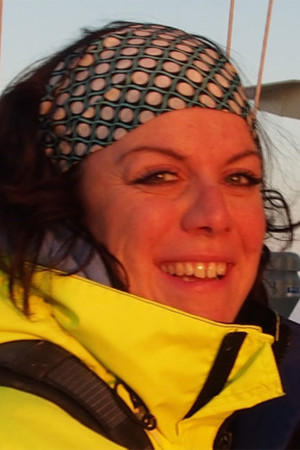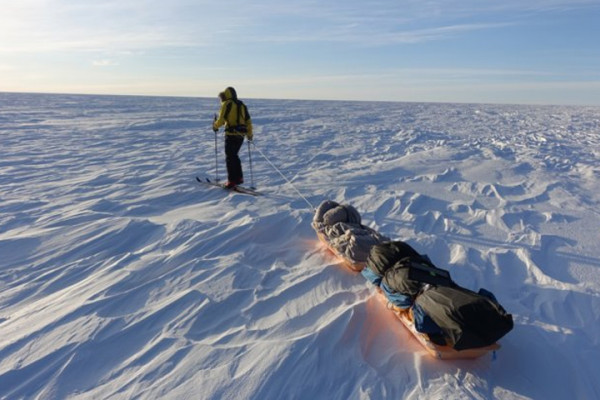
In 2017, Célia and her colleagues from the Laboratoire de Glaciologie, spent 3 months visiting the Ross Sea and Antarctica in the middle of the southern winter. She will tell us about this voyage and show some of the fabulous images she was able to take along the way while carrying out her research.
While the atmospheric concentrations of greenhouse gases are drastically increasing because of human activity, the Polar Regions, especially the Arctic, are warming at an unprecedented pace. This phenomenon is well known to involve an important melting of the ice sheets that causes sea level rise, but the role of ice (glaciers, sea ice and permafrost) melting on the greenhouse effect is to date poorly understood.
Célia J. Sapart is a climatologist and glaciologist born in 1982 in a small village of the swiss mountains. During her studies, she travelled to France, Alaska and the famous Climate Center of the University of East Anglia, Norwich, United Kingdom. Then, she carried out a PhD at the University of Utrecht in the Netherlands that she defended in 2012. Since 2013, she works as researcher at the Laboratoire de glaciologie of the Université Libre de Bruxelles (ULB).
Over the last decade, Célia has focused her research on the natural sources of methane, a strong greenhouse gas. She has explored Greenland, crossed the Arctic Ocean and sailed to the Ross Sea in Antarctica to understand the mechanisms emitting methane when ice is melting. This research is of key importance to predict how the natural sources of methane will respond to climate change and thus how the climate of the Earth will evolve in the future. Célia has published her results in several international scientific journals such as Nature.
Note: Content and images not intended for copyright infringement.

Last month Célia Sapart spoke to our group about her work. She is just 35 and we couldn’t contain our amazement about how much she has done and how much she has travelled. While still at the university, she was fascinated by ice, which led her to travel to the most inhospitable areas of the planet, including Greenland, the North Pole and last year, for three months in Antarctica.
Her lecture was captivating, informative, but for me the most memorable episode was when she found herself trapped in the ice. This happened when Célia and four colleagues descended from the large American icebreaker that had brought them to Antarctica and went to explore in a small rubber boat. They went out by a narrow strait of water to watch the formation of ice. They were one kilometre away from their mother ship, when suddenly they found themselves trapped. The radio connection with the ship is what saved them. The icebreaker had to do a lot of manoeuvring to bring them back to the boat. Eventually they and their craft were lifted out of the water by a crane.
The expedition did not feel like a cruise. The living conditions were Spartan, except for the essential thing, the connection with the world by satellite. I was greatly surprised by Célia’s words on how much noise the icebreaker makes when it cuts through the ice. They had to use special earflaps/earphones to protect their ears. What was most difficult to take was the permanent darkness of the Antarctic winter. We saw the pictures brought by Célia: an exciting, unusual, dark vast space where one can guess the existence of the sun by the distant reflection on the horizon either at dusk or at sunrise. But sometimes they were awarded by a rare event – the green display of lights by the Aurora Belarus.
Célia is not only a lecturer and postdoctoral researcher at ULB, teaching students of different levels and continuing her research work. She also visits schools and speaks to classes, telling them that their future depends upon themselves and they have to act. Her speech had a strong message – something has to be done to save the environment if mankind wishes to survive.



